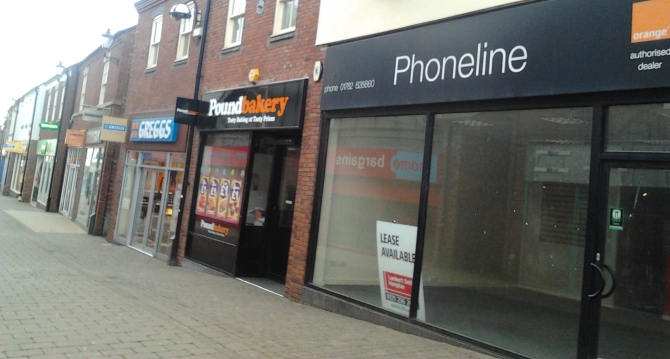The problems facing the high street have been widely documented and disputed. In the past few days alone we have featured contradictory stories about, on the one hand, the high street’s continued decline, and on the other, the beginnings of its recovery.

What emerges from these conflicting opinions is that location is a major factor. Some towns and cities have indeed seen an upturn in the high street market, while others continue to be blighted by high vacancy rates.
This mixed picture has led to differing fortunes for the retail and commercial property sectors but, according to Newcastle University’s Tim Townshend, it is also having an impact on the nation’s health.
Discussing his theory as part of the Design Council’s Active by Design campaign, Mr Townshend – the university’s Director of Planning & Urban Design – says the mix of of high street tenants differs according to location.
In more affluent neighbourhoods the high street has seen an influx of delis, health food shops and expensive kitchen stores. Yet in poorer districts, fast food retailers have taken advantage of the lowering in rents triggered by high vacancy rates, thereby increasing accessibility to unhealthy, energy dense foods.
Furthermore, the proliferation of pay day loan firms, pawnbrokers and betting shops has seen a sharp increase in the number of consumers engaging in activities such as gambling or taking risks with their credit.
Gaming machines found in the majority of betting shops have been responsible for some consumers losing literally hundreds of pounds in only a few minutes, with the result that the government has now put in place legislation regulating the use and owner responsibility of these machines on their premises.
Mr Townshend believes that the combination of these factors is having a detrimental effect upon not only the physical, but also the mental, health of the nation’s consumers.
He says; “We know that the availability / accessibility of some shops and services can be linked to use / abuse and thereby health issues.
“For example, research has recently established links between the proliferation of fast food takeaways and obesity in older children in the UK.
“Similarly, research in the US has linked multiple pay day loan type outlets with people taking out multiple high interest loans, either concurrently or one after another – leading to personal debt, which is in turn linked to poor mental health.”
While the obvious solution to this problem would be to limit the number of units fast food and gambling outlets could take up on the high street, or even prevent them from expanding in this way altogether, this could have a negative impact on the already fragile recovery of the retail industry. Furthermore, without major chains providing a draw for consumers, independent retailers in surrounding properties could suffer as a result.
Perhaps instead the solution is to invest more in health programmes at a local level, involving local retailers such as greengrocers or stockers of whole foods. This would not only help independent retailers to raise their profits, but would also improve the overall health outlook of the community as a whole.
Do you think these issues can be tackled without the risk of jeopardising the recovery of the high street retail and commercial property sectors?